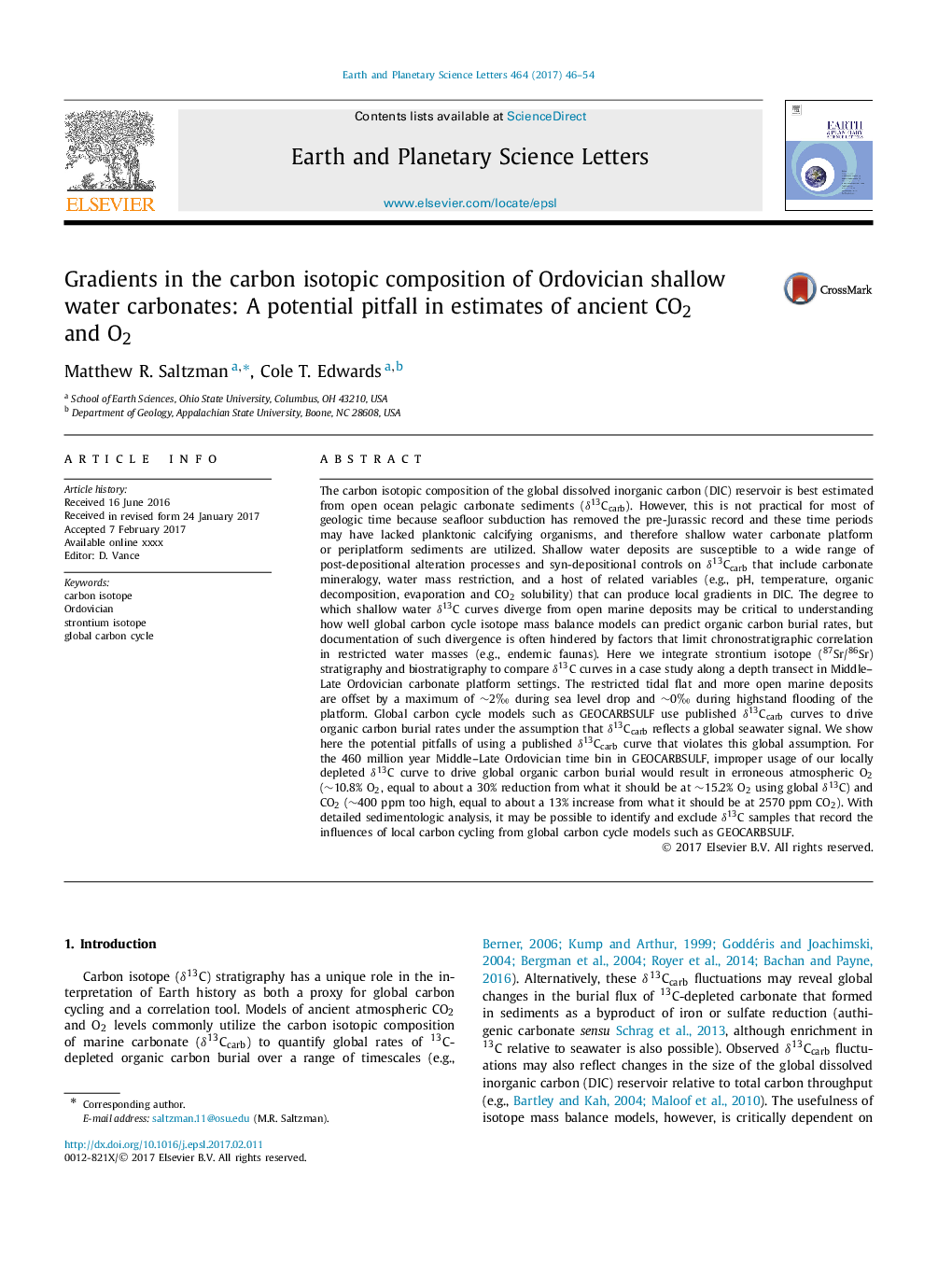| کد مقاله | کد نشریه | سال انتشار | مقاله انگلیسی | نسخه تمام متن |
|---|---|---|---|---|
| 5779910 | 1634692 | 2017 | 9 صفحه PDF | دانلود رایگان |
عنوان انگلیسی مقاله ISI
Gradients in the carbon isotopic composition of Ordovician shallow water carbonates: A potential pitfall in estimates of ancient CO2 and O2
دانلود مقاله + سفارش ترجمه
دانلود مقاله ISI انگلیسی
رایگان برای ایرانیان
کلمات کلیدی
موضوعات مرتبط
مهندسی و علوم پایه
علوم زمین و سیارات
علوم زمین و سیاره ای (عمومی)
پیش نمایش صفحه اول مقاله

چکیده انگلیسی
The carbon isotopic composition of the global dissolved inorganic carbon (DIC) reservoir is best estimated from open ocean pelagic carbonate sediments (δ13Ccarb). However, this is not practical for most of geologic time because seafloor subduction has removed the pre-Jurassic record and these time periods may have lacked planktonic calcifying organisms, and therefore shallow water carbonate platform or periplatform sediments are utilized. Shallow water deposits are susceptible to a wide range of post-depositional alteration processes and syn-depositional controls on δ13Ccarb that include carbonate mineralogy, water mass restriction, and a host of related variables (e.g., pH, temperature, organic decomposition, evaporation and CO2 solubility) that can produce local gradients in DIC. The degree to which shallow water δ13C curves diverge from open marine deposits may be critical to understanding how well global carbon cycle isotope mass balance models can predict organic carbon burial rates, but documentation of such divergence is often hindered by factors that limit chronostratigraphic correlation in restricted water masses (e.g., endemic faunas). Here we integrate strontium isotope (87Sr/86Sr) stratigraphy and biostratigraphy to compare δ13C curves in a case study along a depth transect in Middle-Late Ordovician carbonate platform settings. The restricted tidal flat and more open marine deposits are offset by a maximum of â¼2â° during sea level drop and â¼0â° during highstand flooding of the platform. Global carbon cycle models such as GEOCARBSULF use published δ13Ccarb curves to drive organic carbon burial rates under the assumption that δ13Ccarb reflects a global seawater signal. We show here the potential pitfalls of using a published δ13Ccarb curve that violates this global assumption. For the 460 million year Middle-Late Ordovician time bin in GEOCARBSULF, improper usage of our locally depleted δ13C curve to drive global organic carbon burial would result in erroneous atmospheric O2 (â¼10.8% O2, equal to about a 30% reduction from what it should be at â¼15.2% O2 using global δ13C) and CO2 (â¼400 ppm too high, equal to about a 13% increase from what it should be at 2570 ppm CO2). With detailed sedimentologic analysis, it may be possible to identify and exclude δ13C samples that record the influences of local carbon cycling from global carbon cycle models such as GEOCARBSULF.
ناشر
Database: Elsevier - ScienceDirect (ساینس دایرکت)
Journal: Earth and Planetary Science Letters - Volume 464, 15 April 2017, Pages 46-54
Journal: Earth and Planetary Science Letters - Volume 464, 15 April 2017, Pages 46-54
نویسندگان
Matthew R. Saltzman, Cole T. Edwards,